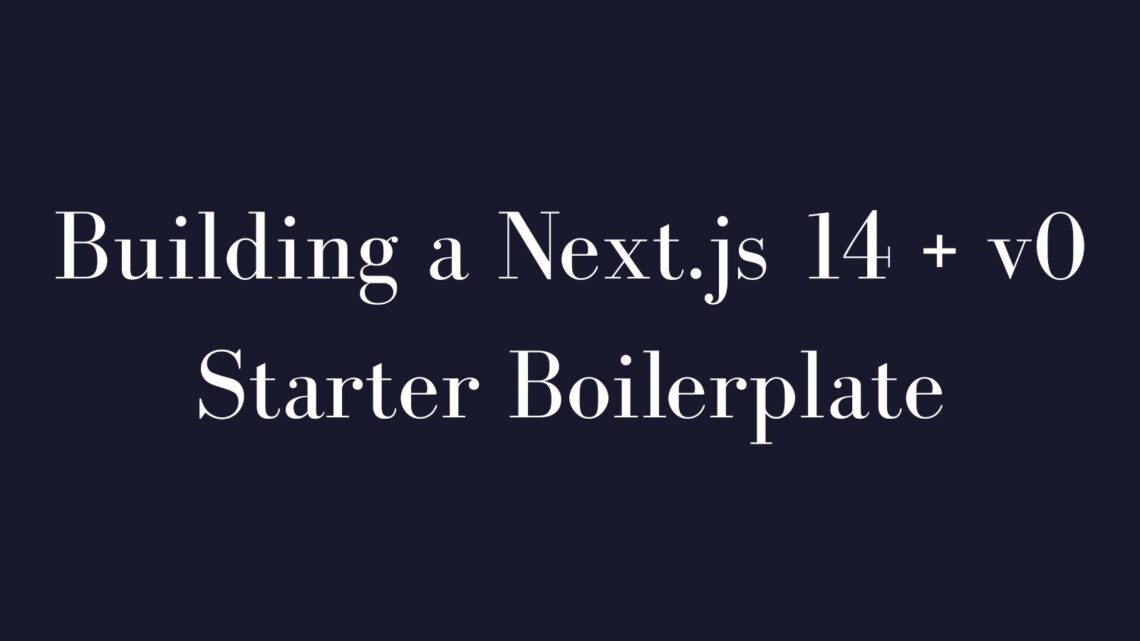A solid v0 nextjs boilerplate saves dev teams weeks of setup. In 2025, speed and clarity are everything—this starter kit brings together Next.js 14 and v0 into a clean, scalable foundation that’s optimized for RSCs, Tailwind, and fast UI generation.
Stack overview
Core stack summary:
| Component | Version | Role | Why it’s used |
|---|---|---|---|
| Next.js | 14.x | Full-stack framework | App Router, RSCs, Server Actions, built-in performance optimizations |
| v0 (CLI) | latest | UI generator | Converts prompts/images into Shadcn/Tailwind React components |
| React | 18.x | UI library | Core runtime for RSCs and v0 output |
| TypeScript | 5.x+ | Static typing | Improves DX, critical when mixing gen’d code with custom logic |
| Tailwind CSS | 3.x | Styling | Required by v0, supports utility-first responsive design |
| ESLint + Prettier | latest | Lint/formatting tools | Ensures code quality and consistency across manual and gen’d components |
Important: This setup is optimized for Shadcn + Tailwind. If you prefer MUI or CSS Modules, you’ll need to swap out v0’s default output, which reduces its speed benefits.
Scaffolding
Use this step-by-step sequence to scaffold the boilerplate:
Set up Next.js project:
npx create-next-app@latestSelect:
- TypeScript: Yes
- ESLint: Yes
- Tailwind: Yes
- App Router: Yes
- src/ directory: Yes
Install v0 CLI:
npm install --save-dev v0This verifies Tailwind, adds Shadcn dependencies, and sets up /src/components/ui as the default path.
Recommended project structure:
src/
├── app/
├── components/
│ ├── ui/ → v0/Shadcn components
│ ├── layout/ → Navbar, Footer, etc.
│ └── features/ → Interactive wrappers, business logic
├── lib/ → utils/helpers
└── styles/ → globals.cssOptional but helpful configs:
- Set path aliases in
tsconfig.json→@/* - Add
.env.example,.env.local, and ignore sensitive envs
CI template
Use GitHub Actions to enforce quality on every push:
name: Node.js CI
on:
push:
branches: [main]
pull_request:
branches: [main]
jobs:
build:
runs-on: ubuntu-latest
strategy:
matrix:
node-version: [18.x, 20.x]
steps:
- uses: actions/checkout@v4
- uses: actions/setup-node@v4
with:
node-version: ${{ matrix.node-version }}
cache: 'npm'
- run: npm ci
- run: npm run lint
- run: npm run format:check
- run: npm run typecheck
- run: npm run buildAdd these scripts to package.json:
"scripts": {
"format": "prettier --write \"**/*.{ts,tsx,js,jsx,md,json}\"",
"format:check": "prettier --check \"**/*.{ts,tsx,js,jsx,md,json}\"",
"typecheck": "tsc --noEmit"
}Deploy button
Add a one-click deploy to Vercel:
[](https://vercel.com/import/project?template=https://github.com/YOUR_USER/YOUR_REPO)For Netlify:
[](https://app.netlify.com/start/deploy?repository=https://github.com/YOUR_USER/YOUR_REPO)Remind users to add .env.local manually on each platform.
FAQs
What’s the main benefit of using v0 with Next.js 14?
It rapidly generates UI components using Shadcn and Tailwind, speeding up prototyping while you keep full control of the code.
Does v0 output server or client components?
By default, server components (RSCs). If you need interactivity, wrap them in 'use client' wrappers.
Can i update a v0-generated component later?
Not automatically. Either re-run v0 add, diff changes manually, or regenerate with a new name and migrate logic.
How do i avoid breaking my build with v0 components?
Always check use client vs RSC, stay updated with dependencies, and use npm ci in CI for reproducibility.
You May Need To Read v0 Frontend Patterns, Using v0 with React Native, Managing Environment Variables in v0 Projects, Creating a REST API for v0 with Next.js App Router, and Why Every v0 Project Needs a Service Layer.





